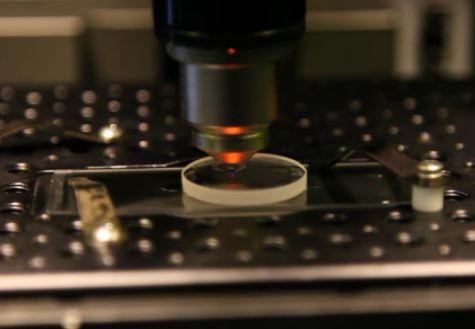
Scientists at the University of Southampton have developed a way of storing up to 360 terabytes of data on glass that can be stored for billions of years.
The breakthrough called 5D optical memory has been developed by optical scientists at the university by making use of nanogratings.
This is essentially nanoscale grating that is created by shooting femtosecond laser pulses of light at metal or glass in order to produce markings in it.
Nanogratings aren’t anything new having been first invented in 1999 by Professor Peter Kazansky, who leads a group at a research centre in physical optoelectronics at the Univeristy of Southampton. Through the technique the research have also discovered how to store up to 50GB of data in glass shards.
This has been achieved by using lasers to create tiny dots in pure silica glass known as "voids."
From research to reality though is a big step, so researchers have developed a method of reading and writing data to use by using a five-dimensional digital data storage method, so instead of tiny dots, the femtosecond lasers create self-assembling nanostructures.
Scientists found that the capacity of each dot could be increased from one to three, depending on the orientation of the structure.
In order to reach the dizzy heights of 360TB it was necessary for the orientation and strength of the nanogratings to become fourth and fifth dimensions. Creating this allowed for the vast amounts of data storage capacity and a thermal stability of up to 1,000 degrees Celsius. It also has a virtually unlimited lifetime when the data device is kept at room temperature the researchers say.
Compared to currently existing technologies the 5D optical memory far outlives them. For example the M-Disc can store data for up to 1,000 years while a regular Blu Ray disc lasts for between 10-20 years, flash storage for only a few years.
3D void-based fused silica disc technology that is being developed could enable storage for up to 100 million years, but that is a distance off the billions of years claimed by the researchers behind the 5D digital storage method.






